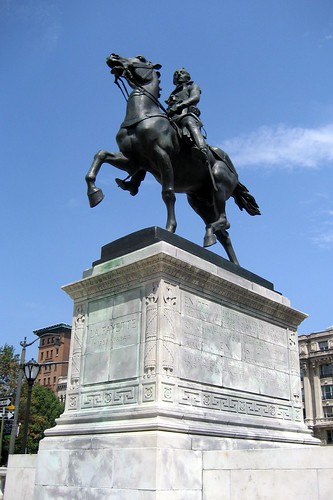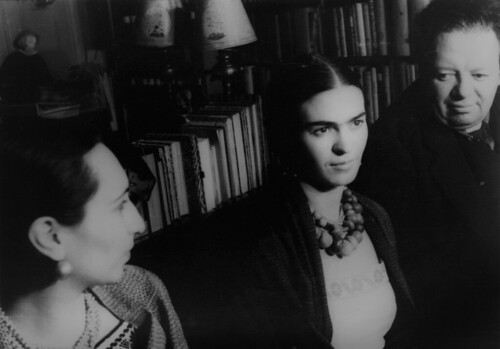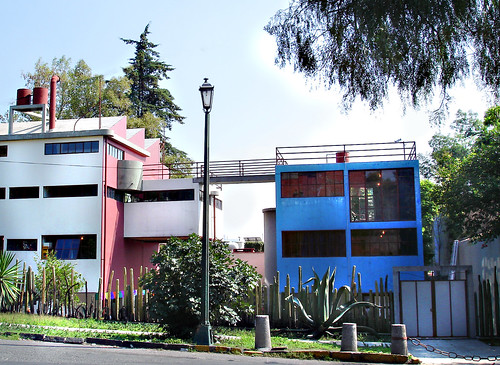Raleigh March 2d 1825
My Dear Huger
We are so far progressed on our way to you when amidst the kindness which it is our Happy for to enjoy, we anticipate a consolation to our late sorrows by mingling them with these in which we have more deeply participated. Mrs Hayne Hamilton and [?] Have [?] me to inform you of our line of route. Pulled as I have been between the anniversary of Washington’s birth day and that of Bunker Hill, which I am the more bound to attend as the compliment paid to me is in my person confered [sic] upon the Revolutionary army, I Had no other way to visit the southern and western states, but to make it a very rapid tour. Contingencies may be anticipated, and actual calculations show that unless I gain a few days it will become impossible to comply with the initiative of the assembly and executive of the state of New York to when along the Canal to albany [sic] and through Vermont to Boston , a part of country. Which the obligation to embark for France somewhat sooner than we had intended would otherwise render it very difficult to visit. Under these circumstances I write to the intendant [sic] of Camden that we expect to be there on the 9h instead of the 8h and will be ready to attend [?] arrangement on the 8’ observing However that if they had been fixed for the 9th so as to make the alternative inconvenient to the citizens of Camden or the persons who are to be present, I shall conform to his wishes. The same observations I will make to you, my dear friend; it has been calculated we should be at Charleston the 13’ and Savannah the 18h. But if by a better calculations of the route, or acceleration of the mark you may forward as so as to make it possible to take our tour from pitsburg [sic] to albany [sic], it will enable me to perform a very pleasant and almost indispensable piece of duty which, if remaining
![Lafayette letter to Francis Huger [verso]](http://farm7.static.flickr.com/6125/5964178989_11887075d5.jpg)
[verso]
to be done would leave me with a remorse or greatly retard our reunion with the two united family which the loss of dear Mde de Tracy more justly desolated. Remember me to my old friends Pinckneys if you are with them. Most affectionately
your friend Lafayette
My companions beg to be remembered to you.Marie-Joseph Paul Yves Roch Gilbert du Motier, Marquis de La Fayette was born on September 6, 1757 in Chavaniac, France to an extremely wealthy family. He was a general in the American Revolution by age 19 and went on to be a leader of the National Guard during the French Revolution.
Lafayette’s parents and close relatives all died by the time he was 12 years old, leaving him with a large estate and inheritance. He married Adrienne in 1774, as his parents had arranged.1 Lafayette left to fight in the American Revolution on April 20, 1777. He departed from Spain disguised as a courier because the British ambassador wouldn’t allow him to join the Americans.2 Lafayette arrived in Georgetown, South Carolina on July 13, 1777. He met and stayed with the Benjamin Huger family for two weeks before travelling to Philadelphia to join the Continental Army. He was placed under the command of General George Washington, with whom he developed a close relationship throughout the war.3 After leading a successful retreat at the Battle of Brandywine despite being shot in the leg, Lafayette was promoted to General.4 Lafayette went on to defeat the British commander General Cornwallis at Yorktown in 1781.
After the Revolutionary war in America, Lafayette went back to France and helped spark the French Revolution. On June 27, 1789, Lafayette joined the National Assembly, and, on July 11, he presented the “Declaration of the Rights of Man and of the Citizen.”5 He was elected vice-president of the Assembly and later declared the commander-in-chief of the French National Guard. Lafayette fell out of favor in 1792 when the Assembly, which was made up of radical Jacobins, declared him a traitor because he supported constitutional monarchy.6 He fled France, intending to retire in America, but he never made it. He was captured by the Austrians and Prussians who were trying to end the revolution in France.
Lafayette was imprisoned from 1792 to 1797 for his involvement in the French Revolution. He spent time in the Prussian prison Silesia and the Austrian prison Olmutz. At this point, the Huger family played a crucial role once again. Benjamin Huger’s son, Francis, became involved in a scheme to break Lafayette out of prison. Huger and his partner Justus Erich Bollman would have succeeded if not for some miscommunication. All three were captured and returned to prison. Despite the failed attempt, Lafayette never forgot the loyalty and courage Huger displayed. Though Lafayette thought he would never see America again, he often thought of America while in Olmutz and was happy that America, at least, was successful in its quest for liberty.7
Then, in 1824, Lafayette was invited to visit America again. President James Monroe personally sent him an invitation on February 7, 1824. He wrote, “...as soon as possible, I may give the orders for a vessel of the State to pick you up at the port which you indicate and bring you to this adopted country of your youth, which has always retained the memory of your important services.”8 Lafayette’s main purpose with the “Farewell Tour” was to revive the Liberals’ political prospects in France by publicizing the lessons that America had learned about republicanism. Lafayette wished to show Europeans how a successful republic operated. Auguste Levasseur, Lafayette’s private secretary during the time of his tour in America, was in charge of sending dispatches to liberal writers in France who published the writings in newspapers and journals.9

The “Farewell Tour” lasted fourteen months, in which time Lafayette visited all twenty-four states. He left for America on July 12, 1824 on an American merchant ship called The Cadmus. He arrived in New York on August 16. In each town/city he visited, a crowd of people waited to greet him. There was a lot of pomp and circumstance upon his arrival: festivities, banquets, banners, etc. Lafayette would give a speech and visit old friends in each place before moving to the next. Among the many cities Lafayette visited, in his above letter he specifically mentions Albany, Boston, Pittsburgh, Charleston, Savannah, and Camden.
In Charleston, South Carolina, Lafayette met up with his old and dear friend Colonel Francis Huger as he promised in his letter. Levasseur writes about welcome that both Huger and Lafayette received:But of all these demonstrations of popular affection, what moved the General most was the touching and generous idea of the citizens of Charleston to have him share the honors of his triumph with his brave and excellent friend, Colonel Huger....When we entered Charleston, his fellow-citizens insisted that Huger take his place beside the Nation’s Guest in his triumphal carriage, where he shared with him the public’s felicitations and approbation. At the banquet, at the theatre, at the ball, everywhere in fact, Huger’s name was inscribed beside the name of Lafayette, to whom the inhabitants of Charleston did not believe they could express their gratitude better than by demonstrating equally deep gratitude to the one who had not been afraid to risk his life to set him free in the past.10
Upon his departure, Charleston’s city fathers gave Lafayette a gold-framed miniature of Huger. The miniature found a permanent home in La Grange, where it served as a constant reminder to Lafayette of his dear friend from South Carolina who risked his freedom trying to rescue him.11
*The Littlejohn Collection at Wofford College is home to three more letters written by the Marquis de Lafayette. The letters were written in 1801 and 1830.
- Hannah Jarrett ‘12 and Becky Heiser ‘11
1 Clary, David A., Adopted Son: Washington, Lafayette, and the Friendship that Saved the Revolution (New York: Bantam Books, 2007), p. 7-20.
2 Buckman, Peter, Lafayette (London: Paddington Press, 1977), p. 40.
3 Clary, p. 85-117
4 Clary, p. 115-117
5 Buckman, p. 143-144.
6 Spalding, Paul S., Lafayette: Prisoner of State (Columbia: University of South Carolina Press, 2010), p. 5-6.
7 Spalding, ch. 4-6.
8 Levasseur, Auguste, Lafayette in America in 1824 and 1825, Journal of a Voyage to the United States, trans. Alan R. Hoffman ( Manchester: Lafayette Press Inc., 2006) p. 2.
9 Levasseur, xxiv.
10 Levasseur, 315-316.
11 Spalding, 234-235.

![Lafayette letter to Francis Huger [recto]](http://farm7.static.flickr.com/6121/5964736558_d2be79fb0a.jpg)












